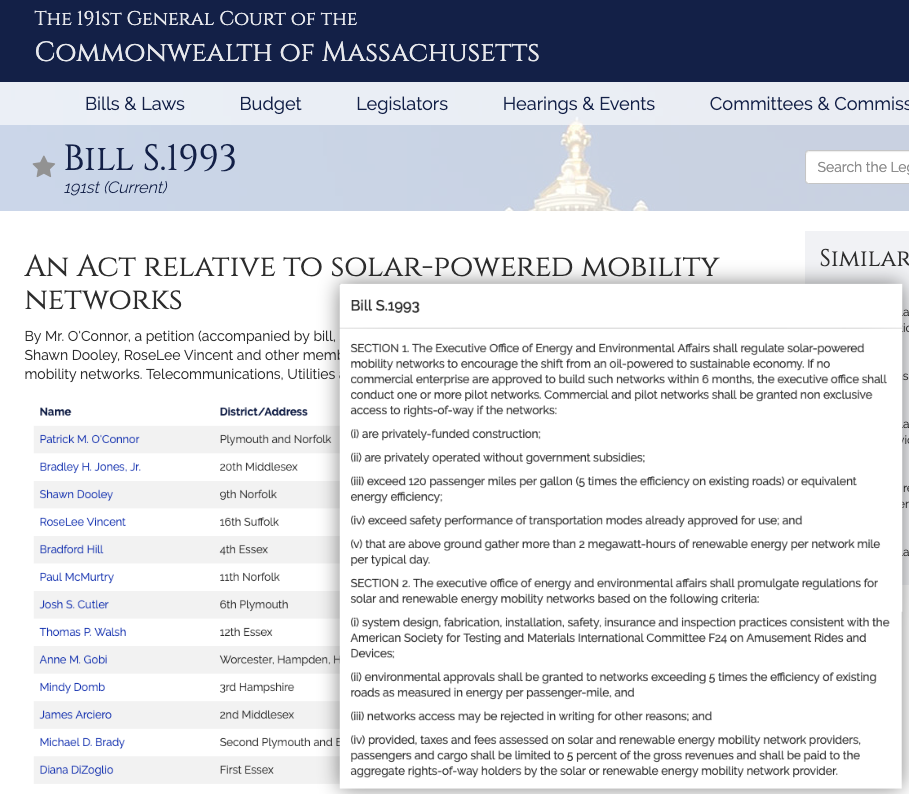Congressional Office of Technology Assessment Study PB-244854 was published in 1974 to provide a list of solutions to the hardships of the 1973 Oil Embargo.
It identified Morgantown's PRT as the solutions to end foreign oil addiction and solve urban traffic congestion. It noted on Page 41 that the barrier to such innovation was Federal regulations. PB-244854 was published 45 years ago (in 2019) and noted the 4 to 6 decades without transportation innovation in America.
Chapter 3: Major Problems in Automated Guideway Transit
INSTITUTIONAL
Compared with many other areas of entrepreneurial endeavor, the environment for innovation in transportation should be favorable. Urban transportation needs are extensive. Production of transporta- tion hardware is dominated by relatively large and well en owed companies with much experience in the research and development process. Given these conditions, one would expect the state of the art of urban transportation technology to be highly advanced. The actual situation, however, is quite the opposite.
Urban transportation technology has advanced at such a slow pace that prevailing systems are almost indistinguishable from their counterparts of four to six decades ago (aside from some relatively minor cosmetic changes). However, the lack of progress is not a result of failure to advance technology. Much advanced transportation technology exists. Rather, it is a failure to devise effective ways to introduce the technology into urban transportation.
This failure stems from a lack of understanding by UMTA of the capabilities of the private sector and local transportation authorities and UMTA’S underestimation of the difficulties inherent in developing and implementing reliable and cost effective new systems. In retro- spect, tEe new systems efforts have served not to stimulate interest in new technology but to discourage already reluctant local transit operators from considering it. The lessons of BART, Morgantown and AIRTRANS have not been lost on UMTA’S capital grants office which is now, understandably, reluctant to consider forms of AGT for capital grants funding. In addition to this limitation of the market, certain practices of the Federal government further discourage initiative within the supply industry
There are two areas in which the federal government could move to eliminate existing barriers to AGT innovation: contractual practices and capital grant procedures. Additionally, some of the institutional arrangements for system development adopted abroad are worthy of serious consideration in this country.
We create governments for the essential task of minimizing war and crimes by coercing compliance with law. Innovation is a compliance failure:
- Federal control of communications resulted in a century of rotary telephones.
- Federal control of transportation resulted in:
- A century with the 25 mpg efficiency of the Model-T.
- Replacing 46% of the 400+ ton-mpg freight railroads with 25 mpg roads.
- Climate Change
- Perpetual oil-wars
- Oil-dollar funded terrorism
Restoring free market to communications in 1982 resulted in millions of jobs replacing rotary telephones with digital communications.
Governments adopting the 5X5 Standard of the Solar Mobility Act (attached as S.1993 Massachusetts) will result in millions of jobs building the Physical Internet®. Red Bull TV documentary of the Future of Transportation outlines the Hyperloop, JPods, and self-driving car aspects of the Physical Internet.
